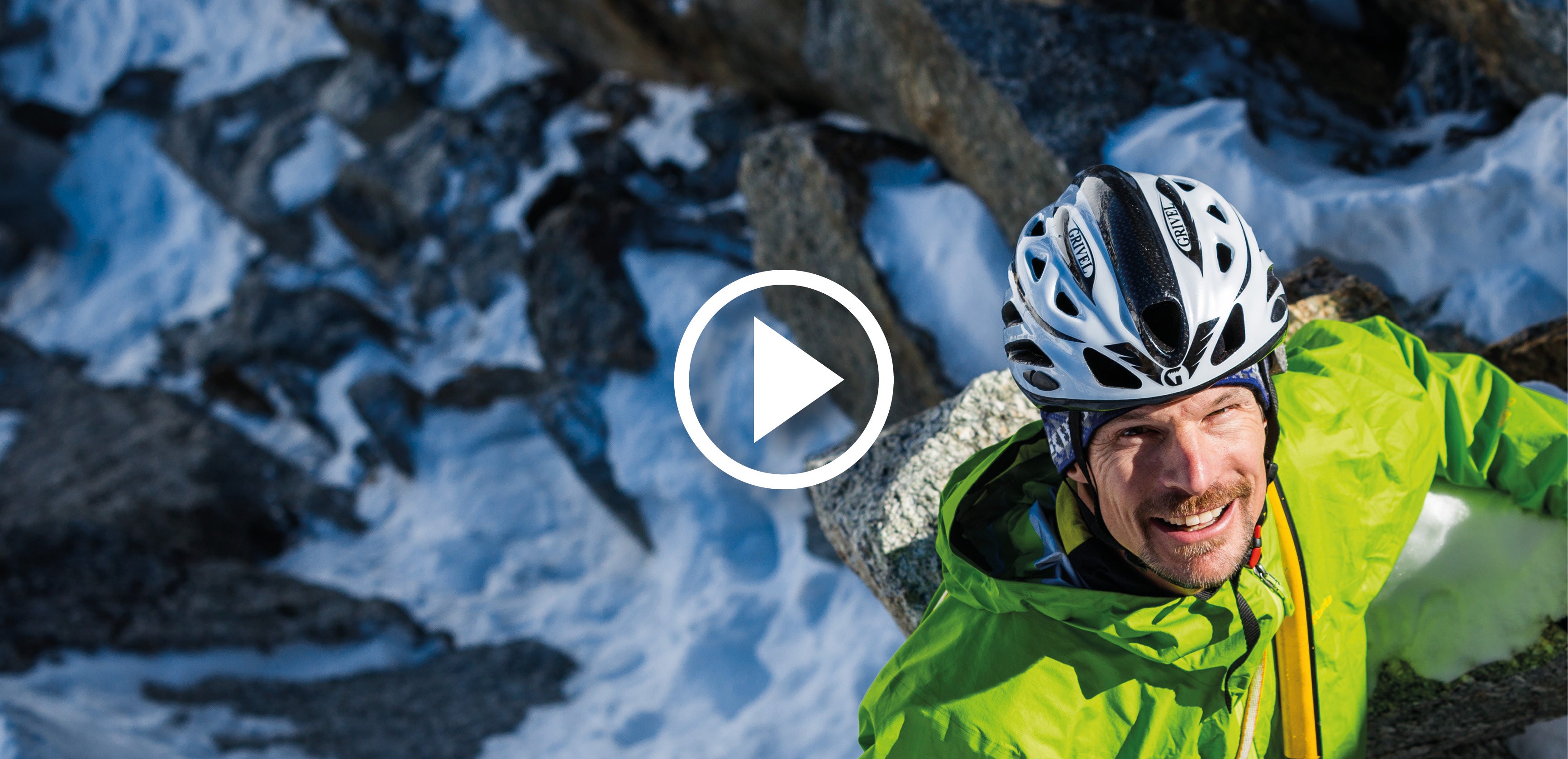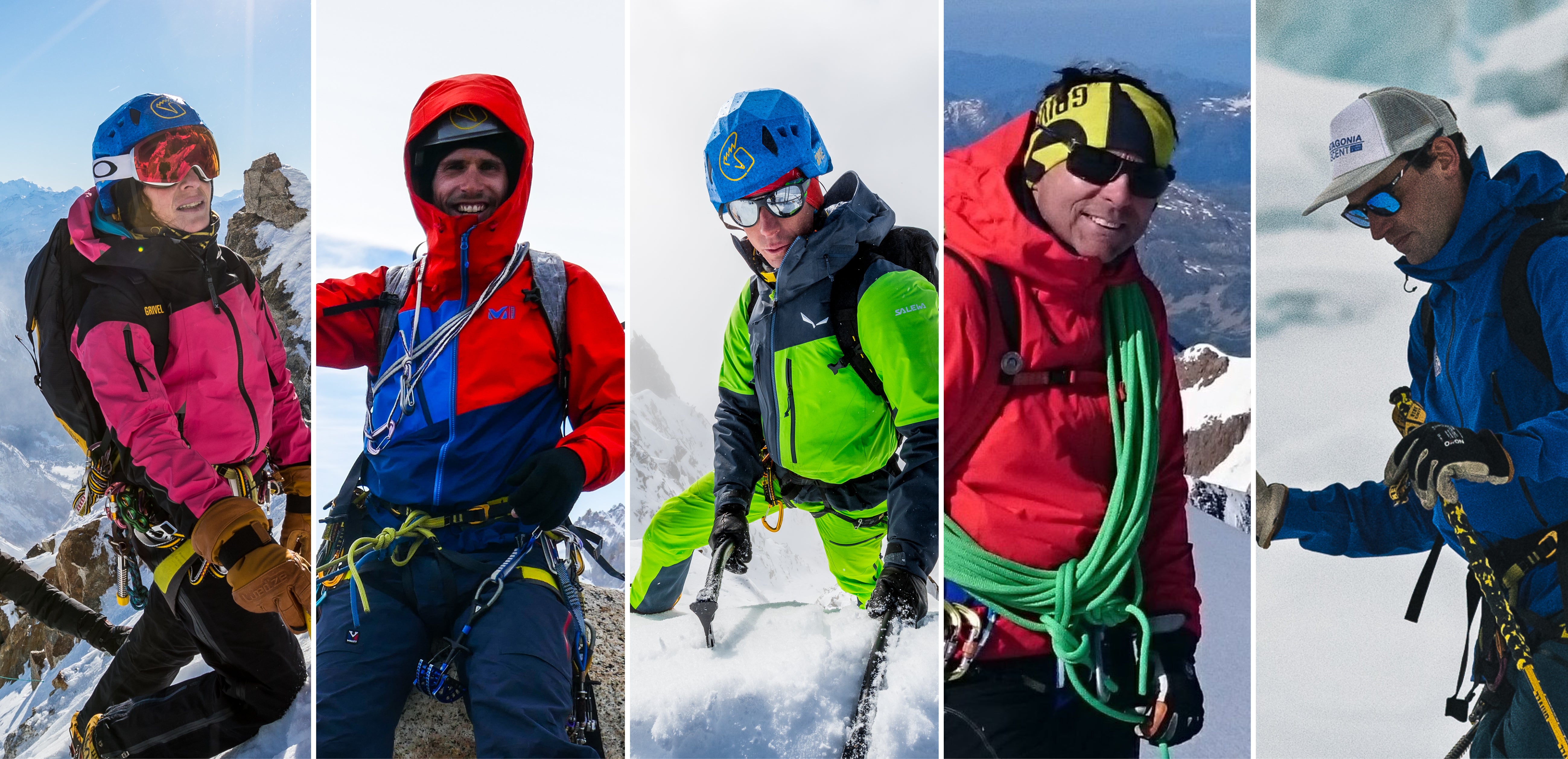
Alpine mentorship videos by Steve House - Ep. 2, Pay Attention! Tips for Thriving, and Surviving, as a Climber
Published on 18/02/2020
In the Alpine Principles video series, one of the most popular videos to date has been “Pay Attention.” It covers a lot of important topics in a short time: speed, efficiency, random chances, situational awareness, partner communications, staying attached, and the risks of “easy” climbing. I’d like to take the opportunity here to flesh these out and dive deeper into the meaning of each concept.
But first, the video:
Speed and Efficiency
Speed and efficiency are terms that are thrown around a lot in climbing. And it’s amazing how much variation there is in what people consider “fast.” Let’s look at each term individually.
Efficiency
Efficiency is borne of practice and familiarity with a given technique. It also alludes to your current skill level at that given technique. The reality is that until you’re an expert in any given technique (or set of techniques), such as steep ice climbing, you can keep improving efficiency through practice. Some techniques don’t require a lot of practice, like trail-breaking in deep snow. However, most mountain athletes, especially beginners and intermediates, can make bigger gains by improving technique than they can by improving fitness. Or, to put it a less nice way, you can be Michael-Phelps-fit, but if you have never worn crampons, you won’t make it far in the mountains because your inefficiency will wear you down. Meanwhile, that 60-year-old mountain guide who never trained a day in her life will not break a sweat because she’s so uber-efficient at basic mountaineering skills like using crampons.
Speed (Really, Speed at Aerobic Capacity)
I’m talking about a pace, ideally a quick one, that you can sustain for a long time (often many hours) while climbing (technical or nontechnical). This very concept is a huge reason why Training for the New Alpinism was written and why Uphill Athlete exists.
Speed at Aerobic Threshold factors not only into your success but also - even more importantly - your safety. As an example, if I can be up and down from the 14,000-foot camp to the summit of Denali in 12 hours, and not be so tired I am at risk of having an accident, I’m clearly taking on far less risk than the person who needs to spend a minimum of four days to cover the same terrain. In fact, my entire climbing career - 60 hours on the Slovak Direct (first ascent; 11 days), 25 hours on the Infinite Spur (first ascent; 7 days), 6 days up the Rupal Face (where the first ascent of an easier route took 2 months) - was based on this concept of maximizing speed at Aerobic Threshold.
The combination of Speed and Efficiency
In my case, correct training came after my technical skills had been honed for over 12 years spent climbing often. You will often hear people talk about speed equaling safety in the mountains. It is very true in many ways. But knowing your limits is also key. The best way to learn your own limits is through the process of developing them.
Importantly, especially in the YouTube era, speed does not imply fast. Never rush. Speed and efficiency combine to create relentless forward progress. You know what slows you down, a lot? Stopping! Speed and efficiency mean you don’t have to stop often, and if you do, you start moving again quickly.
Combining aerobic fitness with technical efficiency and experience - that combination makes you fast.
No Random Chances
You wouldn’t play Russian roulette with a pistol, so why would you cross a snow slope you know nothing about, or climb underneath a serac (ice cliff formed by a glacier) that may (or may not) be ready to totter off? This type of decision-making is surprisingly common in the mountains. I see it all the time, mostly in beginner climbers and skiers who simply don’t know what they don’t know. They are not aware that there is a risk they should worry about.
I am very strict about this one. Being in the mountains is a choice. Moving through them is a choice. Taking risk is a choice. It’s your responsibility to be aware of and minimize risks as much as you can. So taking any random chance goes against the very spirit of mountaineering and must be avoided.
This is why it is so very very important to, as the Scouts say, be prepared. Think through your planned run/ski/climb. If you’re an expert, this will only take a few seconds. If you’re a rock climber venturing out onto a multipitch ice climb, be sure to study and practice how to locate an ice belay and know how to get off of an ice climb. Go through this stuff with your partners, consult a more experienced climber. Your safety is truly your responsibility.
This leads us directly to the next skill, situational awareness.
Situational Awareness
It is one thing to cross an icy slope with a good runout. It’s quite another thing to cross the same slope with a 3,000-foot drop to the death below you. Unfortunately, situations in the mountains are rarely this obvious. I use the concept of situational awareness constantly, from whether to run or walk a section of trail to whether to solo or belay a pitch of climbing.
Another example is the timing of my climb: Will I be down before there is a risk of lightning? The location of breaks: is this spot on the climb sheltered from possible rockfall (despite the fact that I haven’t seen any rockfall up until now)? The location of belays: is my belay protected from ice dislodged by the leader? I also use this type of thinking to plan ahead. What is the highest point I can descend from, besides over the summit, if something goes wrong?
Preparing for known problems
I also frequently use the concept of situational awareness to prepare for known problems, like forecasted bad weather and routefinding. In fact, the first time I guided the famous Hörnli Ridge on the Matterhorn, I arrived at the hut early, and then soloed 75 percent of the route that afternoon while my client rested. I didn’t want to get lost on-route or otherwise be caught unprepared. Similarly, when bad weather was forecast for a stage of the Haute Route, I got my group to the hut before noon, ate a big lunch, and then skied the entire next day’s leg (and back) before dinner. I did this while running a GPS track and noting landmarks. Sure enough, the weather was horrendous the next day and my GPS track was critical in helping me get my group safely through that stage.
All of this is possible through fitness. Again: This is why Uphill Athlete exists.
Partner Communications
Besides being the human(s) you’ve chosen to have this experience with, your partner(s) are an extension of you. At least they should be. And by extension I mean, eyes, ears, noses … guts. What do their guts say? I mean their “instinct” but also, are they hungry? Are you? If you’re the fitter or more experienced of the group, recognize that although you may not need to stop and eat yet, they might.
Communication is at the root of every success and every successful failure, meaning a safely executed descent or retreat. The combined knowledge and observations of a team should be greater and more accurate than the individuals. To put it another way, the sum of the parts should be greater than the mathematical result. If you’re communicating well, 1 climber plus 1 partner should equal more than 2.
Keys to strong communication
If you’re unsure how to communicate well with your partner, use this setup. While driving or approaching the objective, recommend that if critical decisions come up, you promise to do the following:
- To form your opinion independently. Then share. This can be a massive time-saving measure. If you both have the same opinion, arrived at independently, you can a) skip the discussion and b) have more confidence that the decision is correct.
- If you disagree, to take responsibility for why you think you know what you think you know. When you believe something - that a slope is safe to cross, for example - then the onus is on you to be able to explain why. Have examples, observations, and/or data to back up your statements.
- To not take it personally. This can be hard. But remember, everyone wants the same thing: a safe and successful outing.
Staying Attached to the Mountain
I remember quaking in my boots at 1 a.m. I was standing at the base of the Emperor Face of Mount Robson, in winter. Barry Blanchard, my partner, must have noticed because he asked me what was wrong. When I told him I was scared, he said simply: “Don’t worry, we know how to stay attached to this mountain. We’ll stay attached all the way up and all the way down.”
At first I didn’t get it, but he was right. We built belays, protected pitches, and when the time came, we built rappel anchors. Our risk on that climb never was falling. And as I realized how effectively we could mitigate that risk, even on a wild and seldom-climbed wall like the Emperor Face, I relaxed. A lot.
The skills I am talking about are beyond the scope of what I want to deal with here. Placing rock and ice protection, equalizing it to form anchors - these are technical skills and there are many ways to learn these.
Soloing, climbing unroped, can be an important skill to have in the effort to stay attached to the mountain. What might take you off? A wet-snow avalanche due to afternoon warming? Maybe soloing and moving the whole team at one time is safer than belaying.
“Easy” Climbing
Steve Swenson, a Himalayan veteran who has been climbing big mountains since the early ’70s, once told me that he would get much more worried about climbing the easy routes on big mountains than the technical routes. When you look at the history of climbing accidents, his rationale is borne out. Altitude illness and avalanches kill most climbers on big mountains. And I challenge my readers to name one famous climbing death in the big mountains where the fatality was caused by a fall from technical climbing. Alex Lowe? Slab avalanche. Anatoli Boukreev? Slab Avalanche. Which 8,000 meter peak did Ed Viesturs fear most? Annapurna, precisely because of slab avalanche potential.
Easy climbing is hazardous for another reason. It’s easy to not pay attention. Exposed scrambling, common in mountaineering, often falls into the category of “difficult to fall, die if you do.” I myself do not rope up for every bit of exposed scrambling. But I do approach it carefully, deliberately, and more slowly than you may expect.
Here you can watch all the Alpine Principles video library.
Article and pictures by Steve House, February 2020.
Uphill Athlete - www.uphillathlete.com







